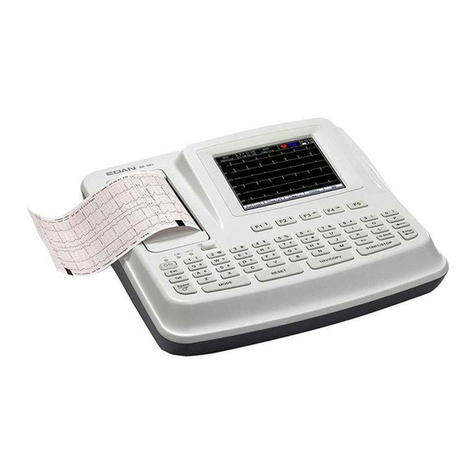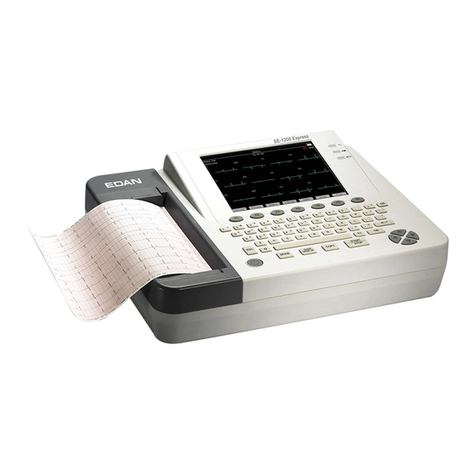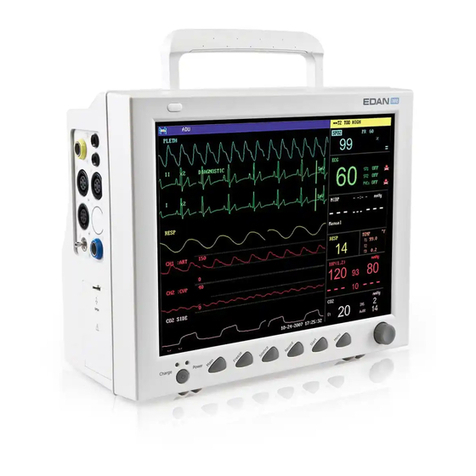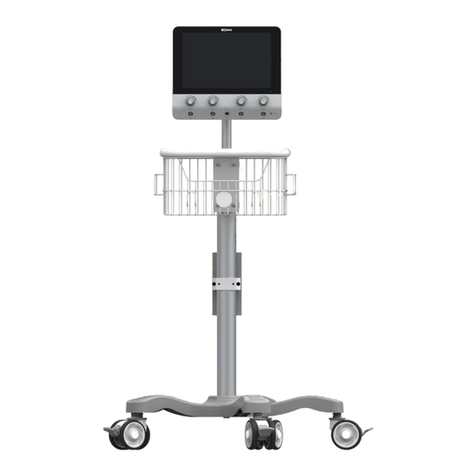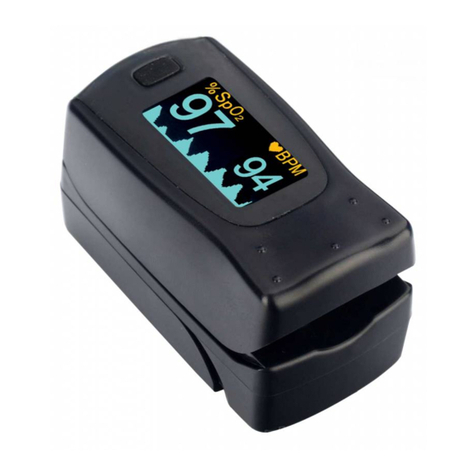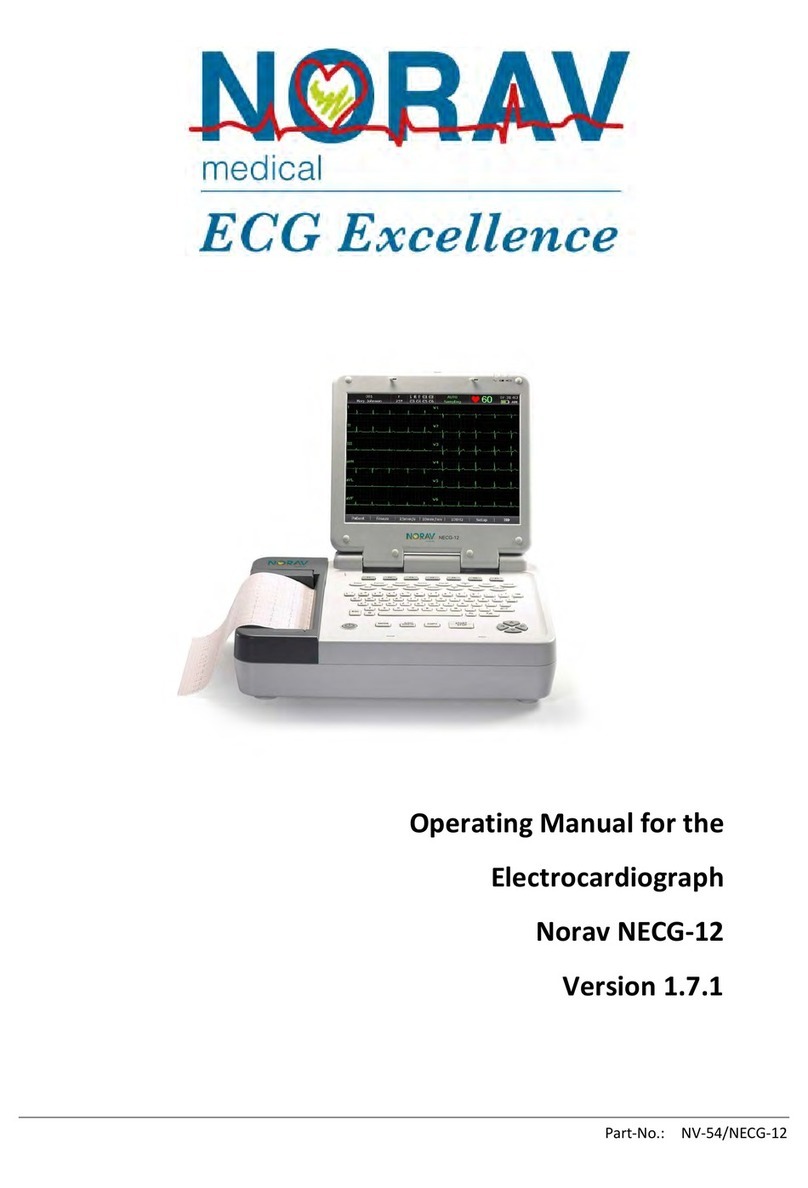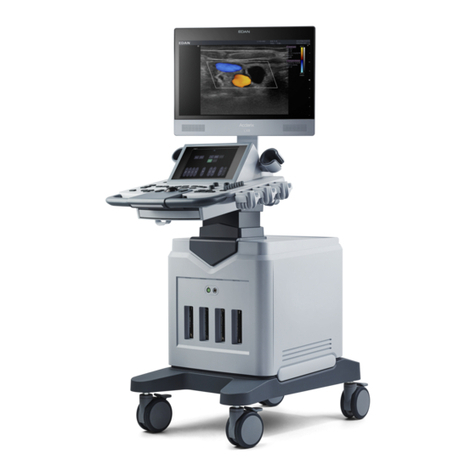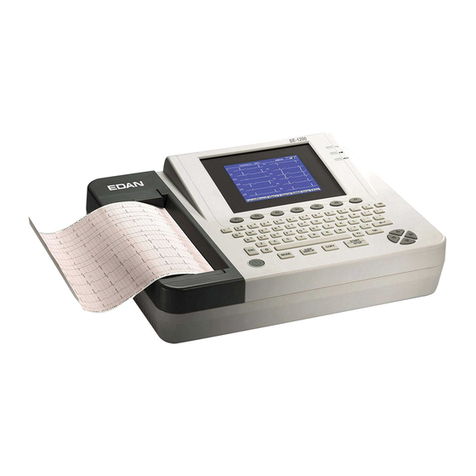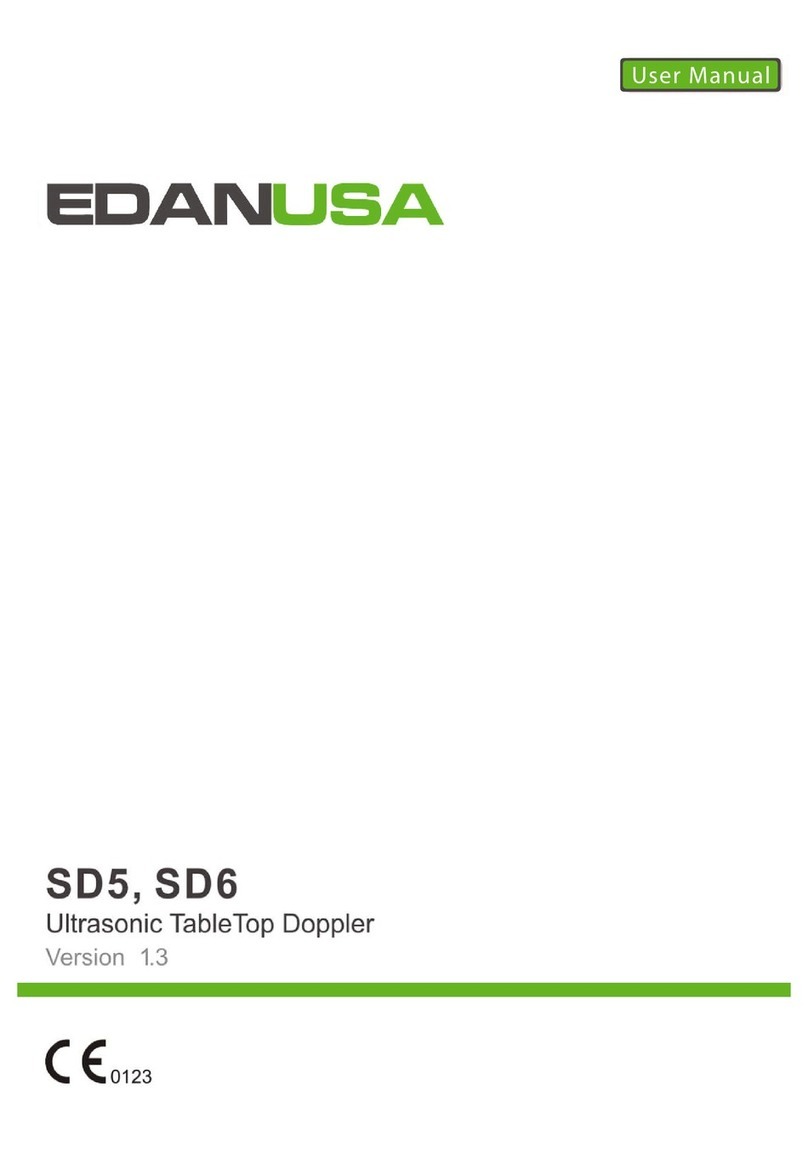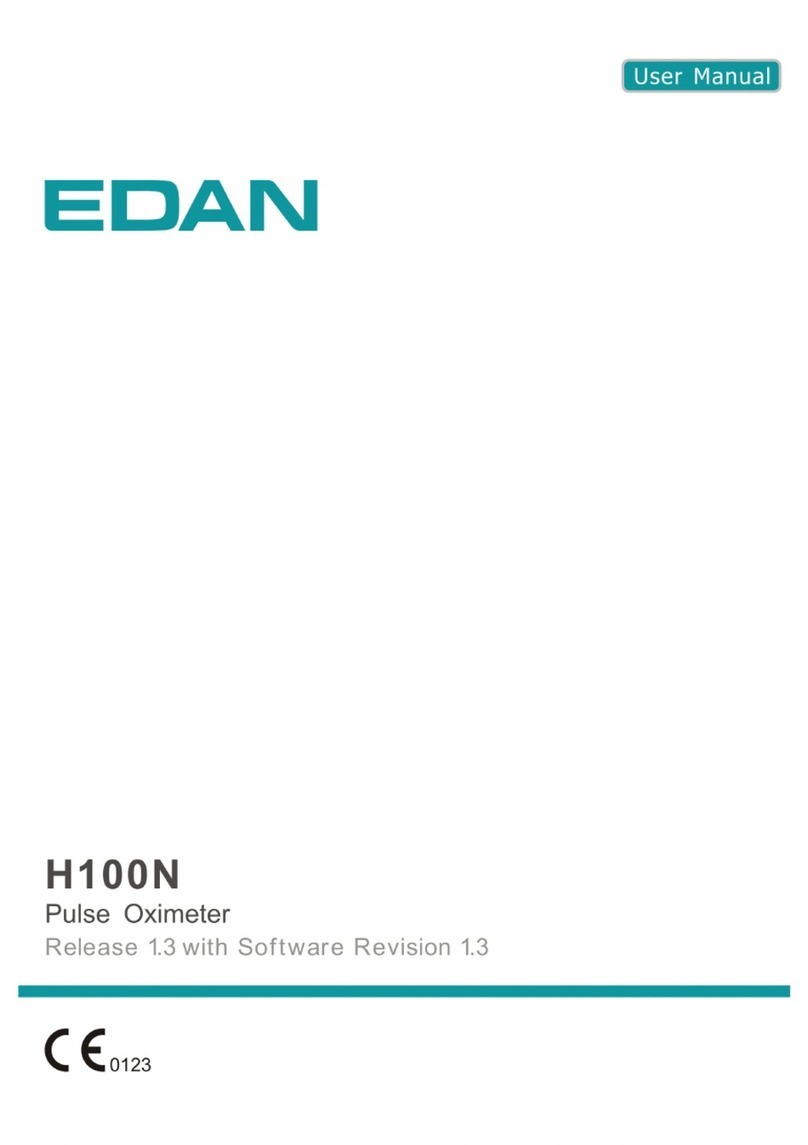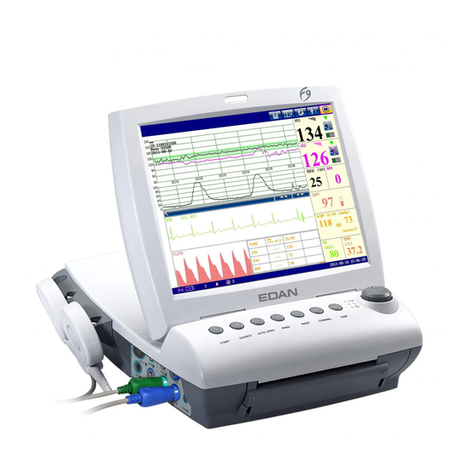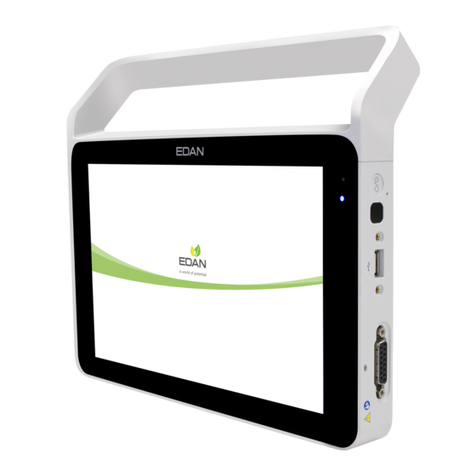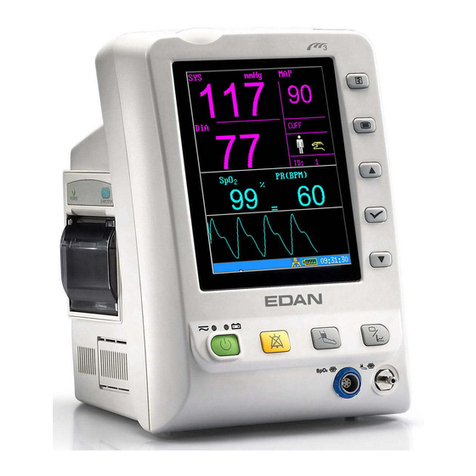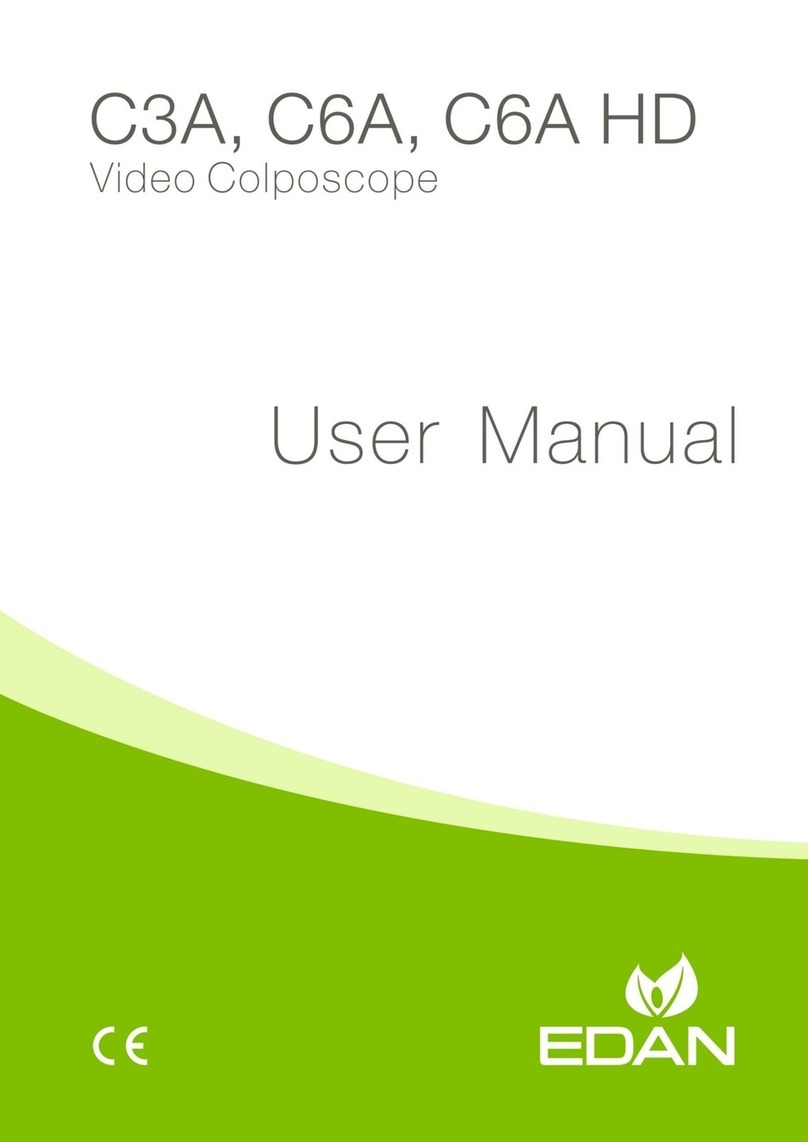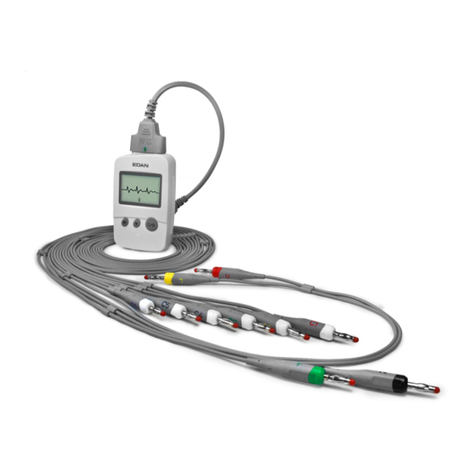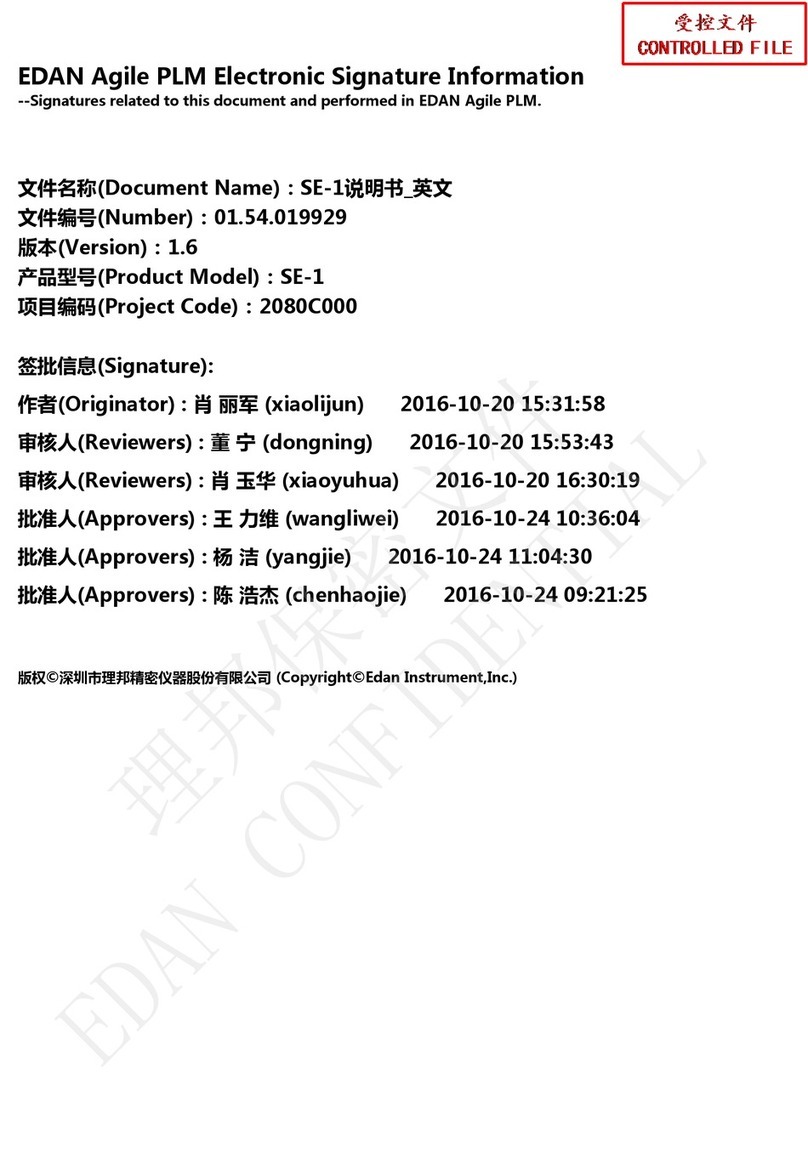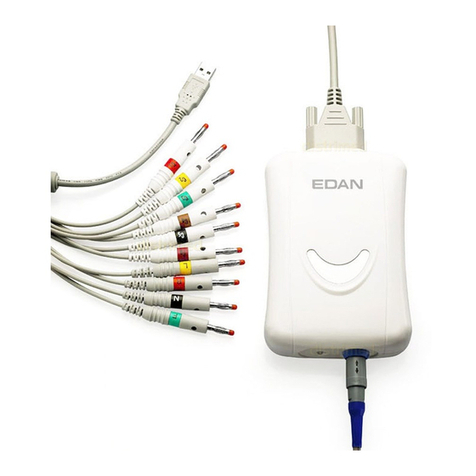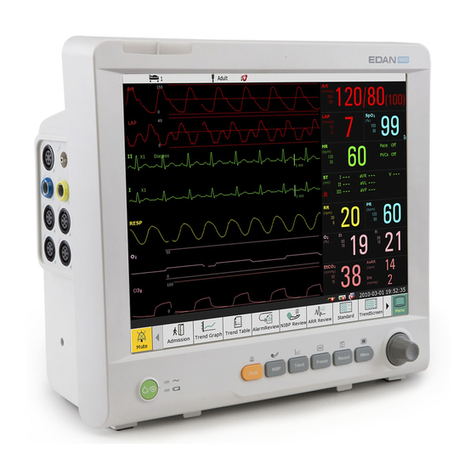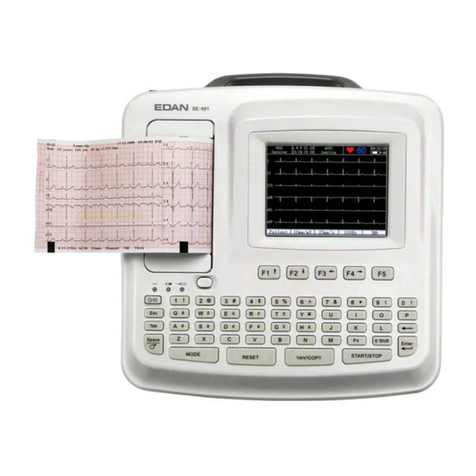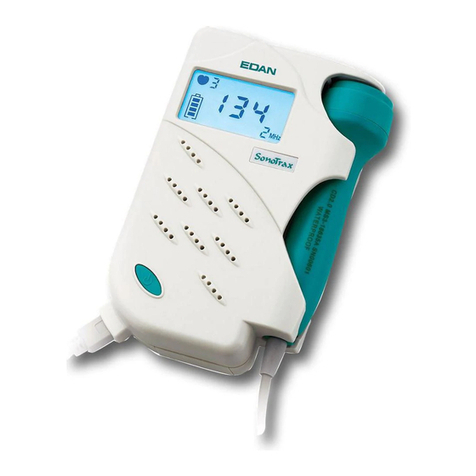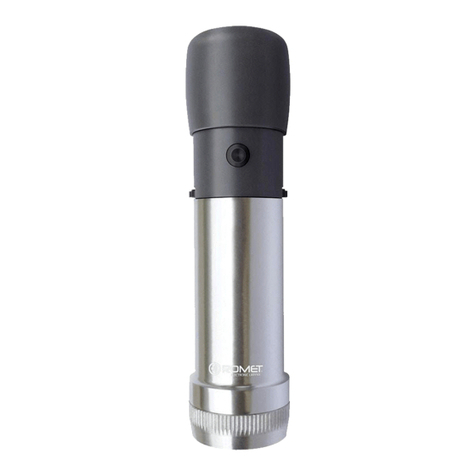H100B Pulse Oximeter User Manual
- 2 -
sensor application errors, and certain patient
conditions.
5 The use of accessories, sensors, and cables
other than those specified may result in
increased emission of electromagnetic radiation
and/or invalid readings of the oximeter.
6 Failure to cover the sensor site with opaque
material in high ambient light conditions may
result in inaccurate measurements.
7 Do not silence the audio alarm function, or
decrease the audio alarm volume, if patient
safety could be compromised.
8 The oximeter is a prescription device to be
operated only by trained personnel. The
oximeter is for attended monitoring only.
9 Dispose of batteries in accordance with local
ordinances and regulations.
10 The oximeter is not defibrillator-proof. However,
it may remain attached to the patient throughout
defibrillation or while an electrosurgical unit is in
use. The measurements may be inaccurate
throughout the defibrillation, or use of an
